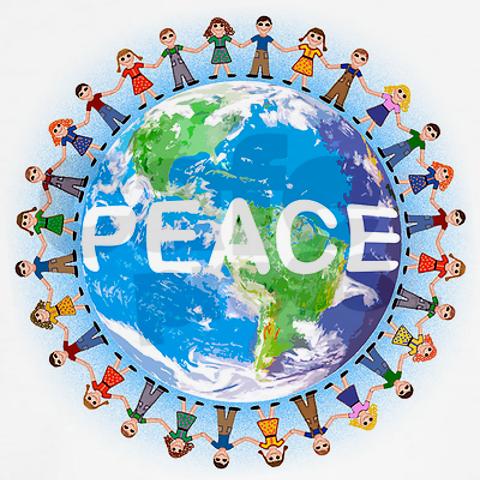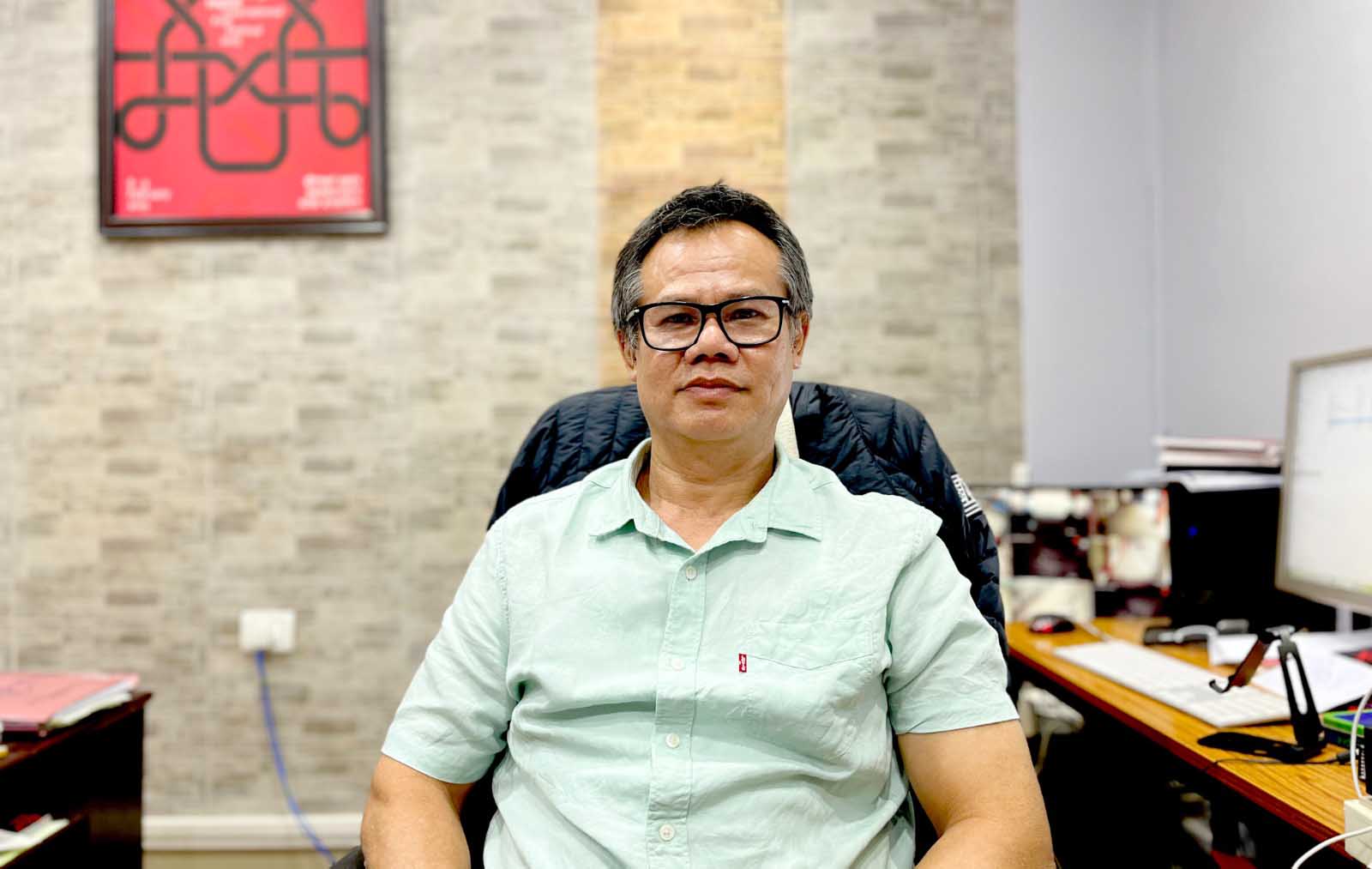Huge funds and resources; human and natural are locked up and being consumed on everyday basis in unfair cut-throat competitions; corruptions, wars and violence, as the standard ways of life! All of these for the state-centric security supported by liberal economy which has percolated down to individual/private security interests destroying traditional family as the primary institution for social reproduction. Concentration and accumulation of power and resources in the state for its security has made the top-heavy structure starving millions to suffer due to overexploitation Earth’s resources beyond the carrying capacities. To save the world from total destruction, the international community since the year 2000 has taken decisive steps to turn towards creating a culture of peace and nonviolence, and sustainable development racing against increasing wars and violence of the powerful few, global warming and climate change. This effort has been possible by redirecting some of the international fundings towards the global efforts for peace and sustainable development. Creating local peace fund is possible by siphoning off part of funds and resources invested in Govt and private security related policies and programs. It is also local and personal responsibility of citizens to dedicate and redirect part of personal and family resources contributing towards peace with oneself and with family members and for the neighbours.
Peace and development as intrinsic human nature
Peace is intrinsic to human beings. Democratic state has obligations to ensure peace as matter of human rights to its citizens. The Constitution of India promised to its citizens equality, justice, liberty and fraternity as a matter of rights. In return, people of India also committed themselves 11 fundamental duties including abiding by the Constitution, eschewing violence, safeguarding sovereignty, unity and integrity of India, promoting harmony, spirit of common brotherhood and dignity of women, rich composite cultural heritage, and protect and improve natural environment, and develop scientific temperament, and humanism among others. Human being’s inner seeking for peace and peaceful relations in mutual interests for personal development based on one’s inclination, talents and potentials must confront with the top-heavy security-centric violent structures and cultures. This is fundamental duty of every citizen to start with self, first; immediately now and in small little ways of dedicating part of personal and family time and resources redirecting the same towards developing human capacities for nonviolence and peaceful ways of resolving conflicts, jointly solving problems and preventing conflicts from getting violent in our everyday life.
Conflict is natural; war and violence are not
Conflict is part of social life because of unique nature of every individual in the society. Any time, there is perceived or real differences in the goal and means between two persons there is conflict. Conflict helps in bringing about social and human development in two ways; one is by both parties choosing violent means – to engage in cut-throat win/lose competitions and confrontations leading to increasing scarcity and destructions of human and material resources and the second is by way of two parties opting for nonviolent and peaceful ways of resolving conflicts through mutual understanding, cooperation, compassion, love, generosity leading abundance. Use of wars and violence as methods of resolving conflicts is not only an ancient cultural tradition it also reduces human dignity and destroys human potentials for living in peace and harmony in the society with the natural world. Wars and violence are learned behaviour which can be unlearnt though awareness and peace education. However, the absence of any fund and budgeting for peace from personal, family to national levels has made peace almost impossible. Peace is possible if there is personal and political will to redirect parts of resources invested for security through wars and violence.
Investing for competitions; wars and violence
Almost all the resources; men and material are invested in competitive ways of life; enhancing personal and national security arrangements, by manufacturing and procuring weapons of violence and wars, etc. These investments go into increasing conflicts, tensions, violence and wars everywhere inside and outside. All the institutions; family, political, educational, economic and social services are designed to produce a few winners as toppers or successful persons while millions are left behind as failures in society. As a result, an estimated 87.41 million (7.34%) youth remains unemployed and 2.1% of India population or 9 million are drug users in India (2023). India spends approximately Rs 8 Lakh Crores in keeping nearly 2 Lakh defence and internal security personnel on job off the agricultural sector for lifetime compared to Rs 1.13 Lakh Crore for Education and Rs 89 thousand Crores for Health. How can there be peace in India when crores of Indians are suffering in poverty due to structural violence?
19 Crore Indians are undernourished and 3000 children die of hunger on everyday basis (NHS/FAO 2018) and India ranks 111th in the Global Hunger Index below Pakistan at 102nd out of 125 countries. How can there be peace in the world if the two oldest (USA) and largest democracies (India) stand at 131st spot and 126th spot, respectively, on the Global Peace Index, 2023? How can there be peace if India stands at 127th rank on gender gap index? How can there be any human development in India if the richest 1% own more than 40% of the country’s wealth while the bottom half of the population share 3% of the wealth (Oxfam, 2023). How can there be peace and justice when the whole of investments is going into strengthening the hands of the haves and impoverishing the have not millions? Nonetheless, there is always hope and inspirations to draw from India’s cultural civilization and spiritual attainments and individual seeking for peace.
Seeds of peace to sow
India is known to the world for the height of its cultural civilization and spirituality. Seeds of peace are found in our cultural civilizations and as the inner callings of every person. Ideas as seeds of peace are encapsulated in ‘Om Shanti’, and ‘Shalom’ in Hindu and Abrahamic religions, respectively. In the Gaytri mantra – peace with self, with others and with the (natural) environment and promotes Vasudheivakutumbakam (the whole world as a family). A phrase in Meeteilon, Tangdu-Leitaba – as a state of stability in life and society where heart, body and mind are firmly grounded or in harmony. Peace studies inform that peace is presence of equality and justice in the society. But these seeds could never sprout in the war fields of cut-throat competitive life. Nevertheless, the inner seeking for peace inherent to every human person for individual self-development –unfolding of unique potentials of every human person will find a space and opportunity. Peace is a process involving certain approach, methods and practices by which to achieve peace. Johan Galtung, an authority in peace research and actions, titled one of his books as Peace by peaceful means. There has to investment to develop human capacities for peaceful means of resolving conflicts.
Creating peace fund for investment in peace
It does not cost huge fund to mobilize fund for peace. It is easy to mobilize investments for peace. Imagine! 20 lakh voting population of Manipur contribute Re 1/- every day to a Peoples Peace Fund (PPF) account through GPay/ PhonPay at the end of the first month Rs 600 Lakh will accumulate for investment in peace! Mobilization of peace fund has to start with oneself, right now and in small ways. Everyone can have a personal peace fund (PPF), every family can have a family peace fund (FPF), every locality can have locality peace (LPF), every community can have community peace fund (CPF), every religious community can have religious peace fund (RPF), every institution can have institutional peace fund (IPF) and every nation can have national peace fund (NPF). It is just a matter of a decision for and dedication to the cause of peace and justice. Investment in peace is to support, promote and strengthen nonviolence and peaceful means of resolving violent conflicts through education and trainings. Peace can grow if there is investment. And if there is peace there can be development for everyone. If there is development there can be happiness in the family and society. Developing these capacities require huge financial resources and funding which can be mobilized by siphoning off from the existing resources, part by part. by individual decisions for personal /local peace fund mobilization. Peace is political – a process to establish the right moral, social and economic foundations.
Creating personal/ family peace fund
Today, one can decide to create a personal peace fund by the following ways; 1) organize a special prayer for peace, 2) dedicate 10% of personal monthly income to open and accumulate personal peace fund, alternately, 3) in case, one does not have regular income then one can dedicate three-days wage to peace fund, 4) in case, one does not wage, fast 3 times a month at equal intervals and deposit equivalent amount of the three meals to the peace fund. All the members of a family can create and raise family peace fund following anyone of two ways of mobilizing peace fund based on individual member’s choice. Peace fund thus created with prayers should have God’s blessing to affect positive changes when it is invested for peace. In order that Peace fund multiply and grow a set of rules must guide on the management and utilization of the fund.
Siphoning Peace Fund and Growth potentials
Family peace funds can grow to bigger funds if family funds are linked and pooled to a Trust for every clan and Leikai; wards and constituencies. Each ward member or GP members may be asked to contribute 10% of their income /development fund to create ward level peace fund (WPF). Similarly, each MLA and MPs may be asked to contribute minimum 10% of their local area development fund to create Constituency level Peace Fund (CPF) and prepare at 10-20 young peacebuilding professionals to serve the people of their own constituency in resolving conflicts in peaceful ways and also reduce violence at the time of election. If all MLAs and MPs contribute 10% of the LADF to CPF, each department can also contribute 10% of departmental budget as Departmental Peace Fund (DPF) to resolve conflicts peacefully. Thus, it is possible to create State Peace Fund (SPF) through legislation and create institutions for peace. Peace fund is not a demand for additional fund but it is a little effort of siphoning resources invested in competitive ways of life and in wars and violence, part by part, to another fund call peace fund for investment in developing human capacities for nonviolence and peaceful ways of life.
Governance of peace fund
The Governor of the state may be entrusted to form a governing body of the state level peace fund. Members of the governing body may be drawn from persons with high integrity in the society to open an account where all peace funds may be deposited and administered as per a guideline. An administrative office for the peace fund may be established with volunteers and professional staffs to manage the fund and invest the fund as per guidelines. The Governor may also be requested to commit a percentage of his/her discretionary fund to the state peace fund, annually. Under the direction of the Governor, a percentage of Security Related Expenses (SRE) or the fund for civic action programs available to all the military and central paramilitary forces from the Home Ministry may also be pooled in to the state peace fund
Invest for development of local capacities for peace
There are several areas to invest for peace. Peace fund can be exclusively invested to develop human capacities for nonviolence, creativity, innovation of peaceful ways of solving-problems and resolving conflicts at all levels. 30% of the total peace fund should always to be kept as reserve and maximum of 70% may be spent at any given point of time. Peace fund can be invested in the following areas starting with individual self-development;
- spend part of peace fund for personal self-development courses like yoga and meditation, workshops and training on communication skills, mediation, dialogue facilitation and conflict resolution, etc.
- pay part of the peace fund to someone in the family or in the neighbourhood who is successful in resolving conflicts based on the feedback of the conflicting parties;
- use part of the fund as reward to someone who as individual /group has successfully prevented violent conflicts;
- use part of the fund to sponsor a child/ adult to attend peace meeting, peace education program or training or peace camp, etc.
- organize local seminar on peace and justice;
- spend on books for peace and conflict resolution;
- use part of the fund in developing cooperative society and participatory and inclusive democracy at community level,
- training of teachers in peace pedagogies,
- creating whatsapp groups/social media channels for dialogue and mediation on conflicting issues
- use part of the fund to mobilize more peace fund from diverse sources,
- Invest peace fund in electing the right leaders;
- Invest peace fund in environment friendly technology, public transports and personal cycles;
- Use part of the peace fund for annual peace awards at locality and state level
- Use part of the peace fund to invest in solar and wind energies
- Use part of the peace fund to promote military-civil and police-people interactions and relations programs
- Invest peace fund in organic farming and restoration of ecosystem; and
- Invest peace fund in promoting common interests and common goods over private interests; etc.

The writer is Visiting Faculty, NEISSR, Nagaland and Coordinator PINE (Manipur-Nagaland)











